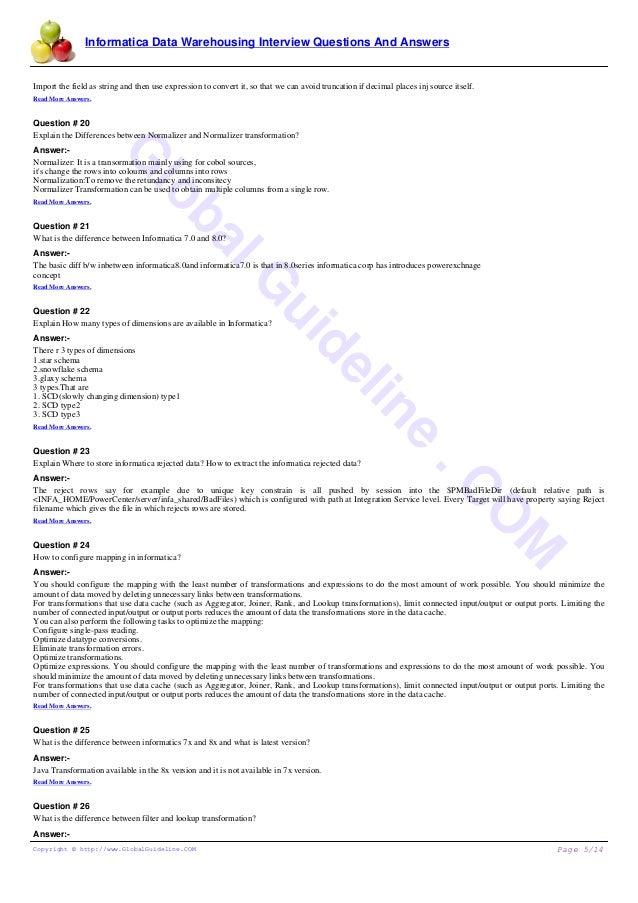Vsam Files In Informatica Tutorial

What is VSAM? VSAM (Virtual Storage Access Method) is a file access method for an IBM mainframe operating system. VSAM organize records in indexed or sequential flat files. What is VSAM normalizer transformation? The VSAM normalizer transformation is the source qualifier transformation for a COBOL source. May 23, 2007. I am new to mainframe systems and we have a requirement to extract data from VSAM files. How to Parameterize Excel Source Filename in Informatica Powercenter? Mapping to Load data using Configure Concurrent Workflow Concept in Informatica. Dec 21, 2014. Welcome the to the Normalizer Transformation in Informatica tutorial. In this tutorial we will discuss in. You can use this feature if your source is a COBOL copybook file or relational database table. The VSAM Normalizer receives a multiple-occurring source column through one input port. The normalizer. When to Use PowerCenter. PowerCenter supports only fixed width files,Informatica VSAM reader does not support variable length file. Variable length VSAM file. In PowerExchange create a data map for the VSAM file by importing the COBOL copybook. Multiple manual steps for each source database!
VSAM sources often de-normalize data and compact the equivalent of separate table records into a single record. PowerCenter Normalizer transformation can process VSAM sources with OCCURS and REDEFINES statements. The REDEFINES clause allows you to specify a different PICTURE clause or a different data name for a previously defined data item. Also The REDEFINES statement allows you to specify multiple PICTURE clauses for the sample physical data location. For example, suppose you sometimes want to refer to the decimal portion of the data, sometimes the whole number portion, and other times you need to refer to the entire number. You can use the REDEFINES clause as shown below. 01 Data-Group 03 Numeric Item PIC9(5)V99.
03 Numeric-Split Redefines Numeric-Item. 05 Numeric-Whole-Portion PIC 9(5). 05 Numeric-Decimal-Portion PIC 9(2). The OCCURS clause specifies the number of times a field is repeated. In other words, OCCURS defines the number of entries in a table. A typical example is months in a year: 01 Month-Table 03 Month-Name Pic X(9) Occurs 12 Times The Designer can import COBOL file definitions from source files that have the proper COBOL file layout. Black Decker Smart Scan Manualidades. Metin2 Vote For Coins Hack : Free Programs.